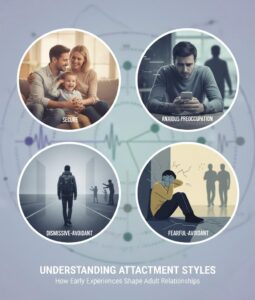Love, a profoundly complex and multifaceted emotion, has puzzled philosophers, poets, and scientists for centuries. Yet, in recent years, psychology and neuroscience have begun to shed light on what constitutes love and how we can discern whether what we are experiencing is truly love or something else. This article explores the scientific indicators of being in love, referencing contemporary research to help understand this deeply personal experience.
Physical Responses
One of the first signs you might be in love is the presence of specific physical responses. Fisher, Aron, and Brown (2006) in The Journal of Sexual Medicine discuss how love activates the brain’s reward system, releasing chemicals like dopamine, oxytocin, and vasopressin, which play a significant role in pair bonding. These chemicals can induce physical sensations such as increased heart rate, sweating, and a feeling of euphoria similar to the effect of certain drugs.
Emotional Attachment and Preoccupation
Being in love often involves a deep emotional attachment to the person, characterised by constant thoughts about them. According to Zeki (2007) in NeuroImage, love is associated with neural activity in areas of the brain involved in attention mechanisms, indicating an enhanced focus on the object of one’s affection. This preoccupation can manifest as daydreaming about the person, longing for their presence when they are away, and experiencing a deep sense of joy in their company.
Empathy and Concern for Well-being
A hallmark of being in love is a heightened sense of empathy for the loved one and a genuine concern for their well-being. A study by Reis and Aron (2008) in Review of General Psychology highlights that love involves a unique combination of intimacy, passion, and commitment, with a notable emphasis on prioritising the other’s happiness, sometimes even above one’s own. This selfless concern is a distinguishing feature of love, differentiating it from mere infatuation.
Willingness to Compromise and Sacrifice
Love often entails a willingness to compromise and make sacrifices for the other person. Hatfield, Rapson, and Martel (2010) in Review of General Psychology discuss how love motivates individuals to act in the best interest of their partner, including making sacrifices and negotiating compromises. This readiness to put the partner’s needs first can be a strong indicator of love.
Shared Values and Future Planning
Being in love typically involves a deep alignment of values and a shared vision for the future. Researchers such as Acevedo, Aron, Fisher, and Brown (2012) in PLOS ONE have found that long-term romantic love is sustained by brain systems associated with pair bonding and shared values, suggesting that planning a future together and aligning on core values are indicative of love.
Conclusion
Identifying whether you are in love involves introspection and an awareness of your physical and emotional responses. Love encompasses a range of experiences, including intense physical attraction, deep emotional attachment, empathy, a willingness to compromise, and a shared vision for the future. Recognising these signs within oneself can clarify feelings and guide relationships towards more meaningful and fulfilling interactions.
References
- Fisher, H., Aron, A., & Brown, L.L. (2006). Romantic love: an fMRI study of a neural mechanism for mate choice. The Journal of Sexual Medicine.
- Zeki, S. (2007). The neurobiology of love. NeuroImage.
- Reis, H.T., & Aron, A. (2008). Love: What is it, why does it matter, and how does it operate? Review of General Psychology.
- Hatfield, E., Rapson, R.L., & Martel, L.D. (2010). Passionate love and sexual desire. Review of General Psychology.
- Acevedo, B.P., Aron, A., Fisher, H.E., & Brown, L.L. (2012). Neural correlates of long-term intense romantic love. PLOS ONE.
How to get in touch
If you or your patient/NDIS clients need immediate mental healthcare assistance, feel free to get in contact with us on 1800 NEAR ME – admin@therapynearme.com.au.







